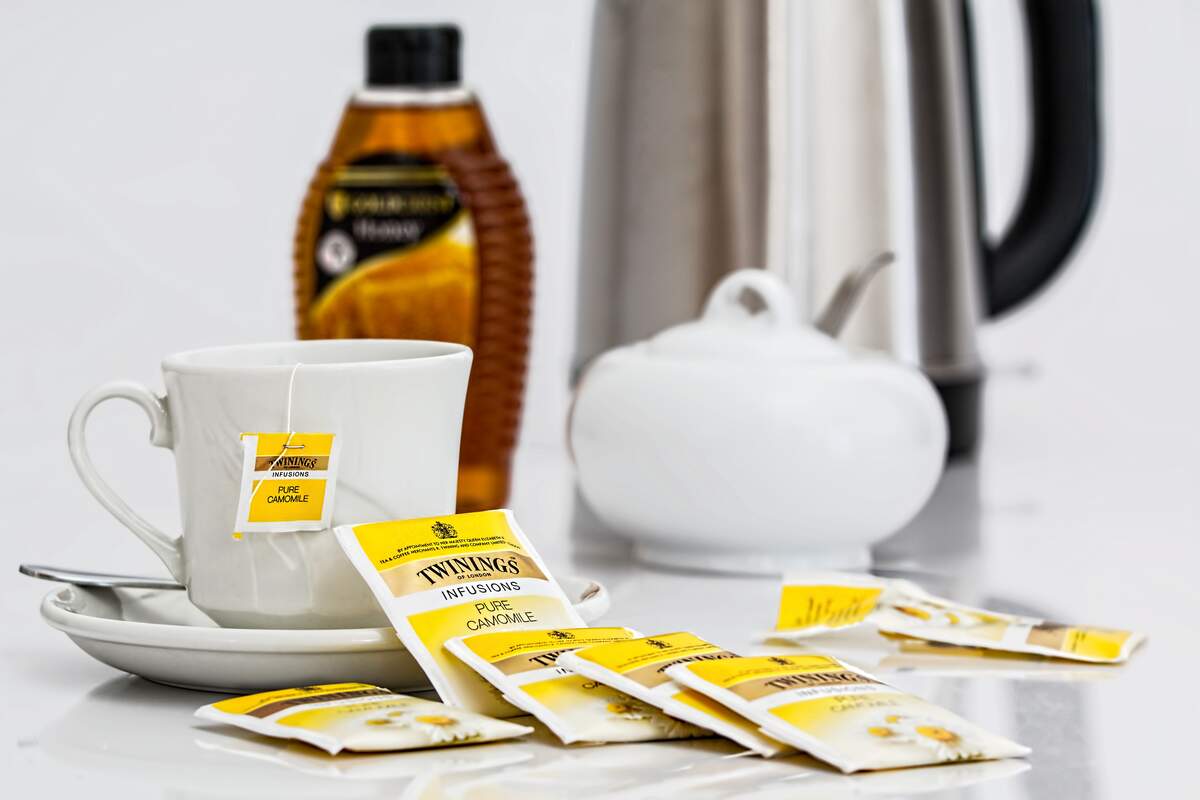

National Hot Tea Day
Observed
annually on January 12th (since 2016)
Dates
Founded by
Tea Council of the USA on January 5th, 2016
Member of
Tags
Food & Drink
Hashtags
Sources
http://www.teausa.com/14655/tea-fact-sheet
https://www.biospace.com/article/releases/the-tea-on-the-powerful-health-benefits-of-america-s-beloved-hot-beverage/
https://www.mentalfloss.com/article/73747/15-simmering-facts-about-tea
https://www.prnewswire.com/news-releases/drink-to-your-health-this-new-year-tea-council-of-the-usa-declares-first-ever-national-hot-tea-day-300199016.html
National Hot Tea Day celebrates the rich culture and history, diverse types, health benefits, and soothing qualities of tea, and encourages "tea fans across the nation to raise their cups in honor of the beloved beverage." The day, which takes place during National Hot Tea Month, was started by the Tea Council of the USA, a non-profit association that connects tea packers, importers, and allied industries in the United States and in the major tea producing countries. They work to promote awareness about tea by providing info about its positive attributes. They assert that "drinking tea is the perfect way to start the New Year with a sound mind and body."
The drinking of tea may date back almost 5,000 years. According to legend, it was first drunk in China in 2737 BCE, when Emperor Shen Nong accidentally imbibed it, after tea leaves blew into his boiling water. Tea went from being a medicinal beverage to a casual beverage around 300 CE. It has long been tied to Britain, but it wasn't until the seventeenth century that it became popular there, when the upper class began drinking it. At the time it was rather expensive and taxed by the government. By the late nineteenth century, it was popular with all British social classes.
Water is the only drink that is more popular than tea. Four out of five Americans drink tea, and the United States is the third-largest importer of tea in the world after Russia and Pakistan, with consumption continuing to rise. Tea-drinking is most widespread in Turkey and Ireland. Today's holiday is dedicated to hot tea, but only 15-25% of tea that is sold in the United States is hot tea. Both the young and old drink tea at about the same rates in the United States, and there and around the world sugar, honey, and milk are often added to it.
True tea comes from the Camellia sinensis plant. The main types of teas are black, green, white, dark, yellow, and oolong. They all come from the same plant—their differences lie in how they are processed. Tea leaves begin to oxidize after they are picked. White tea is the least oxidized, green tea is more oxidized, and black tea is the most oxidized. Dark tea is fermented after it is manufactured. Black tea is the overwhelming favorite of Americans, although green tea has been gaining in popularity. Besides true tea, there also is herbal tea, which is made from herbs or plants such as chamomile, mint, and hibiscus.
Tea has numerous health benefits. It contains a high concentration of flavonoids: bioactive compounds with antioxidant properties that may help neutralize free radicals that cause chronic disease. Studies show that tea may promote heart health. One bioactive compound that may promote this is EGCG. Tea may lower overall cholesterol as well as "bad" LDL cholesterol, while at the same time raising "good" HDL cholesterol. It may also improve blood pressure. Black tea is especially beneficial for cardiovascular health: it may reduce the risk of heart disease, heart attack, and stroke.
Some components of tea may have a negative effect on cancer. In particular, the main antioxidant in green tea, EGCG, may help kill cancer cells. Drinking tea is associated with a lower weight, waist circumference, and BMI. Its flavonoids may boost the metabolism, increase fat oxidation, and improve insulin activity. Tea may help improve energy levels, partly on account of its caffeine content.
Finally, tea improves cognitive performance and has numerous soothing qualities. It may help improve memory and concentration: Studies have shown that green tea may improve memory, attention, and brain function. Another study has shown that drinking two cups of black tea may increase attention. Green tea may act as a bulwark against creeping dementia, and the antioxidants in tea may protect brain cells from free radicals. L-theanine and EGCG are two of tea's bioactive compounds that may enhance brain function, and both may also help reduce anxiety. L-theanine may help the brain with focusing attention and in the solving of complex problems. On National Hot Tea Day, we raise a glass in celebration of these health benefits and soothing qualities of tea, as well as to the diverse types of tea that can be found, and in appreciation of its rich culture and history.
How to Observe National Hot Tea Day
Raise a cup or two of hot tea in honor of its history, diversity, health benefits, and soothing qualities. The focus of the day is on the drinking of true tea—tea from the Camellia sinensis plant, such as white, green, or black tea—but herbal tea may be drunk as well. Picking up various types of tea from a store to try or stopping at a tea shop are excellent ways to spend the day.
You could also participate in this year's IndividualiTEA Photo Sharing Sweepstakes, sponsored by the Tea Council of the USA, where $500 and a year's supply of tea can be won. This can be done by taking a photo or video, or writing a description of the unique ways you use tea, and sharing it on Instagram or Twitter with the hashtag #IndividualiTEA and tagging @TeaCouncil. Go to the IndividualiTEA webpage for more information.





















